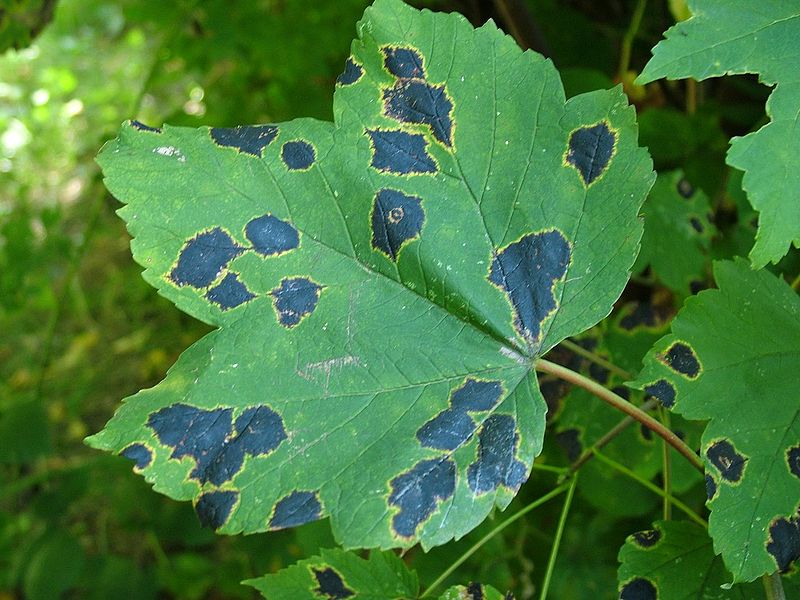
Maple Tar Spot. This file is licensed under the Creative Commons Attribution-Share Alike 3.0 Unported license.
This is a follow up to the recent post “maple leaves falling and we’re all going to die.”
Turns out, stories of our imminent death may have been premature. I was able to contact Professor George Hudler of Cornell for more information, and he’s got more good news.
First, it is worth knowing that the virus, Rhytisma acerinum, commonly known as Maple Tar Spot, has a finite life span. The spots you see on the leaves are the “fruiting body,” where the spores grow over the winter.
When spring arrives, if conditions are right, the fruit will burst and “shoot” spores willy nilly into the air where they will hope to land on a suitable host. If they do not land on a host, the spores will soon die.
Knowing that, imagine if you put all of those leaves in a big pile this fall. Come spring, the spores would shoot from the leaves but mostly get trapped under the leaf above it. Nothing for the spore to grow on, it will die.
Now imagine those leaves in a compost bin. Same thing happens but even the top layer is covered by the bin lid, so the spores find nothing to live on. That is to say nothing of the decomposition that may occur within the bag or, in our case, in a compost pile.
All of that in mind, here is Dr. Hudler’s take:
“Composting tar spot – infected Norway maple leaves poses no threat to the health of next year’s leaves and will likely reduce inoculum loads in the process. Even if the composting process caused absolutely no degradation of the leaves, just putting the leaves in piles means that many leaves are turned over and/or buried by other leaves. This, alone, results in many spots that would otherwise produce some spores left with nowhere to shoot those spores. Add in degradation by other microbes and small animals (insects and other arthropods) and there will be little of the tar spot fungus left. So by all means, compost away.”
So am I going to continue composting the affected leaves? Yes, with even less trepidation than before.
A few more items that are be worth knowing:
- Maple Tar Spot is only an aesthetic problem and rarely causes any significant harm to the tree.
- Infected leaves left about the yard may have viable spores to release in the spring, so it is still a good idea to clean them up. (They’ll probably all be fallen and raked by the time you might want to begin mowing leaves into your yard.)
- As I said previously, there’s no way you’re going to get rid of all the leaves and this disease has been around for years anyway. It will reappear regardless what you do.
- I usually mulch all of our gardens with shredded leaves. I expect I’ll do so again this year, but I’ll try to avoid affected maple leaves.
Happy composting!

Thank you for sharing your knowledge, Jeremy! I was wondering about the same thing and your article is very timely and helpful!
I’m glad it was helpful! Enjoy the fall!